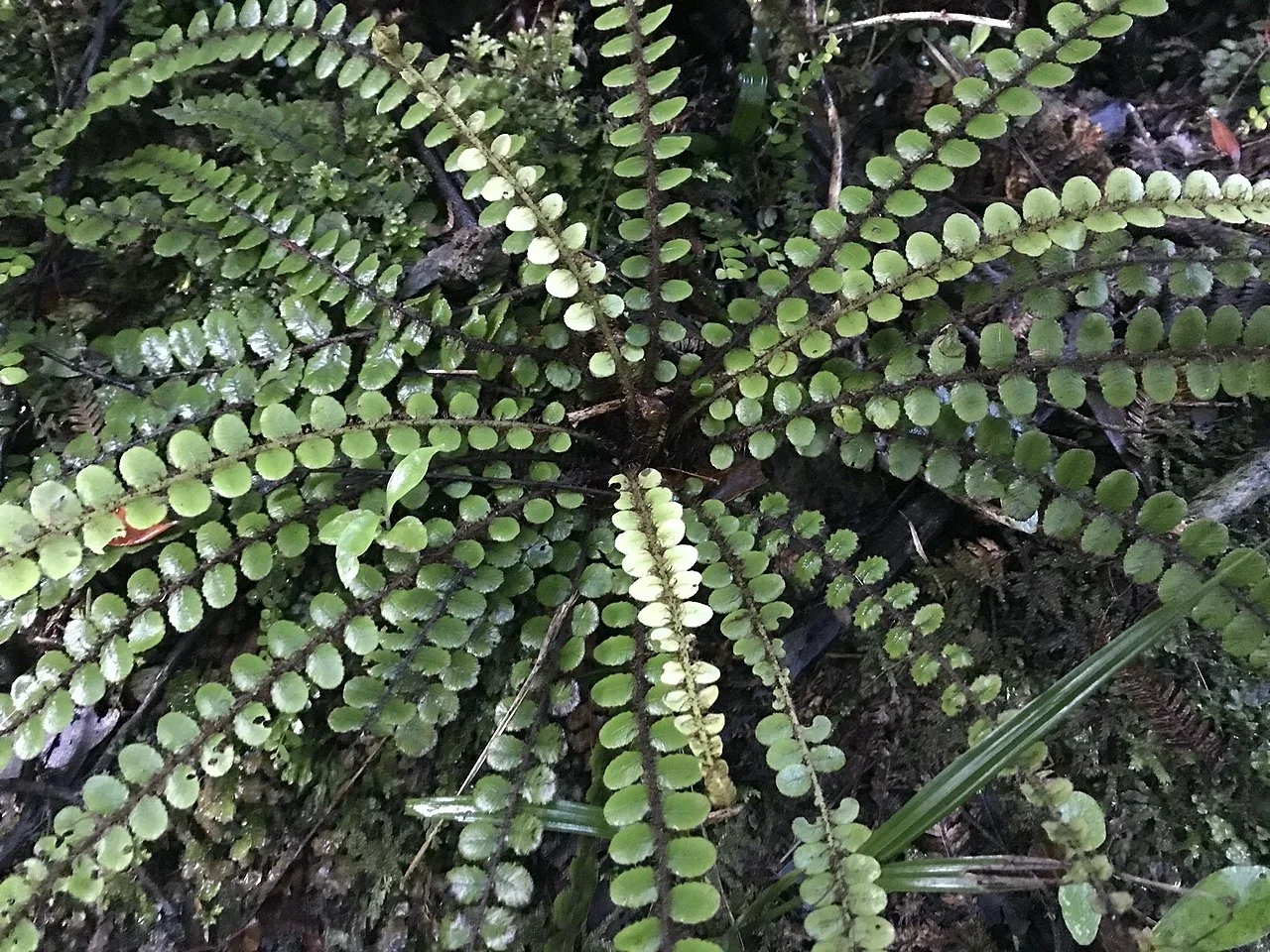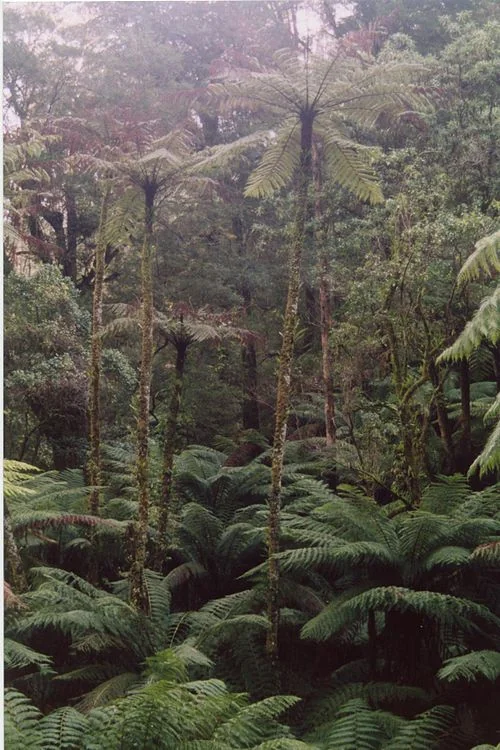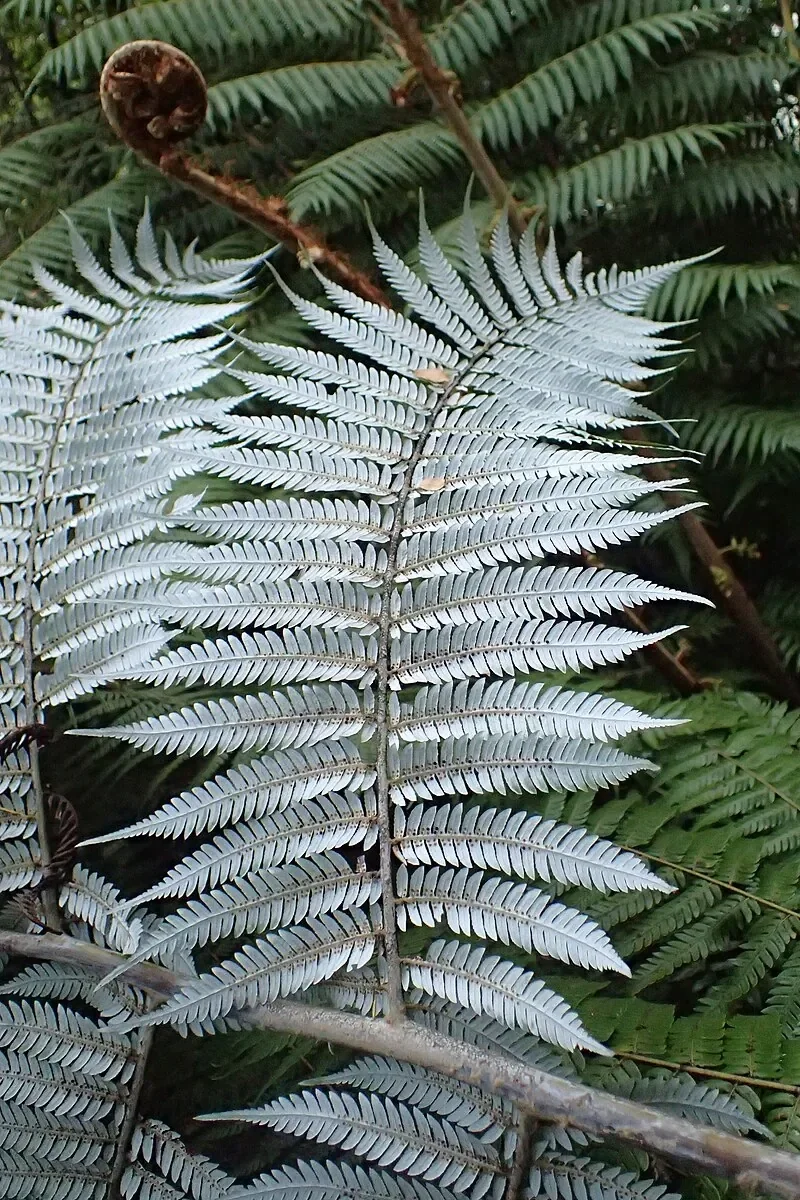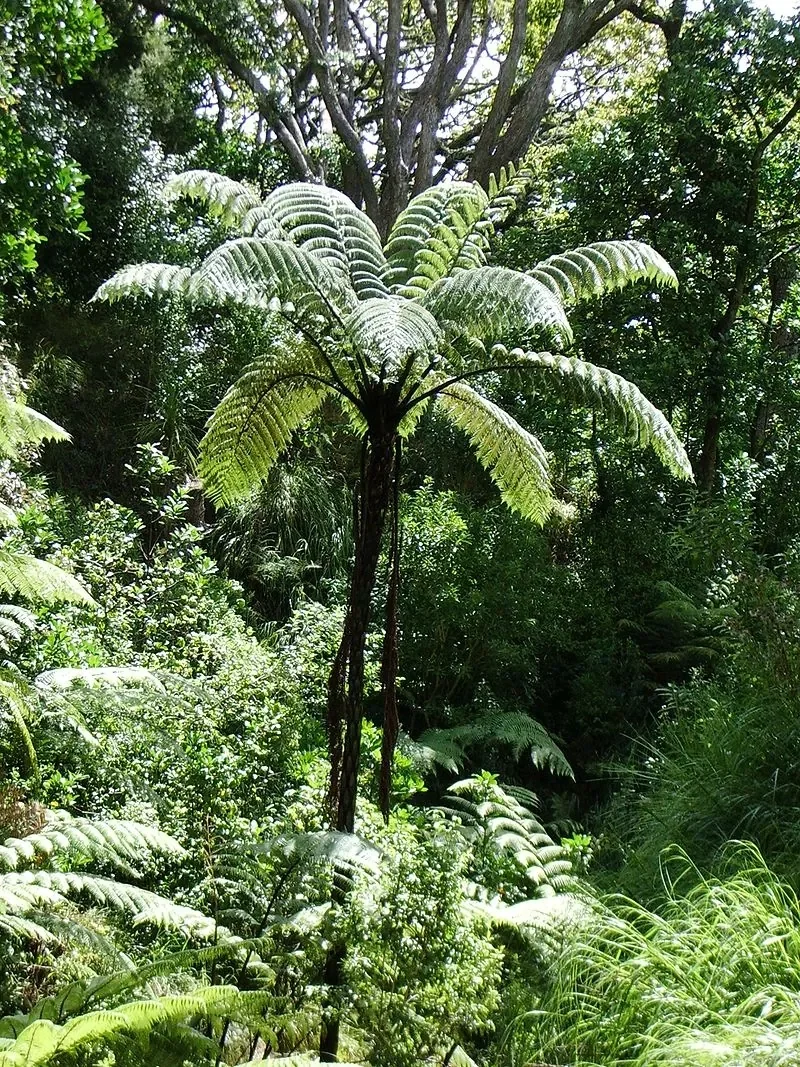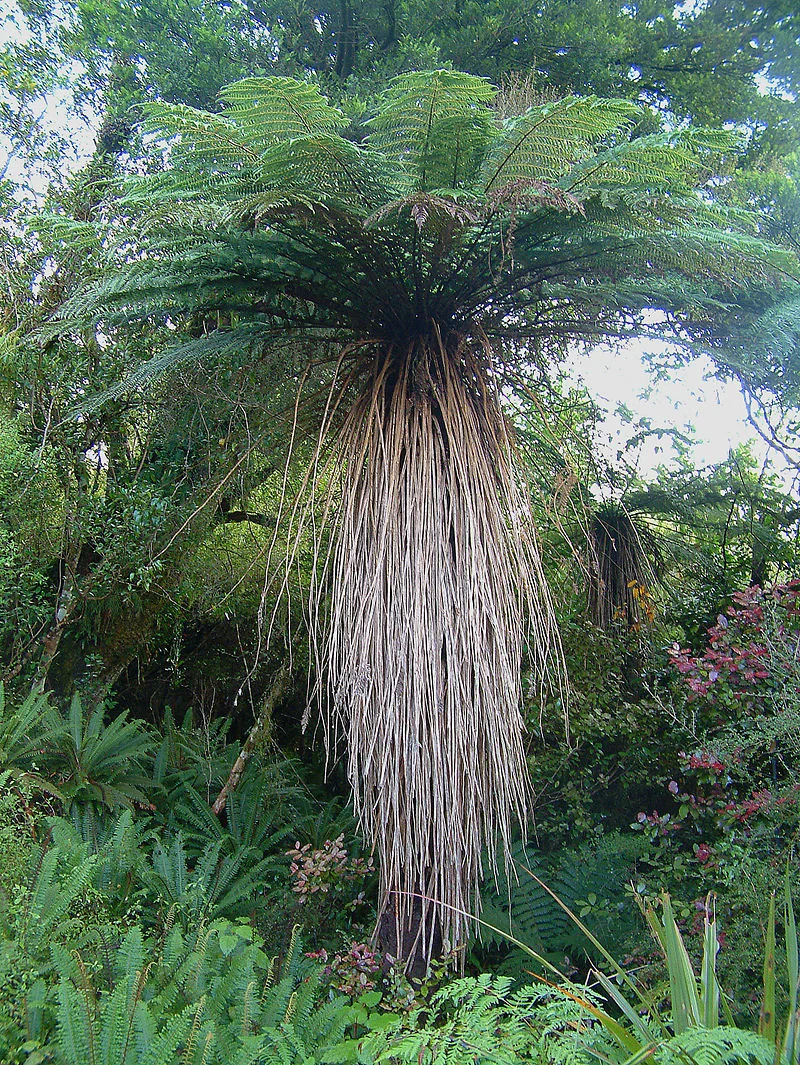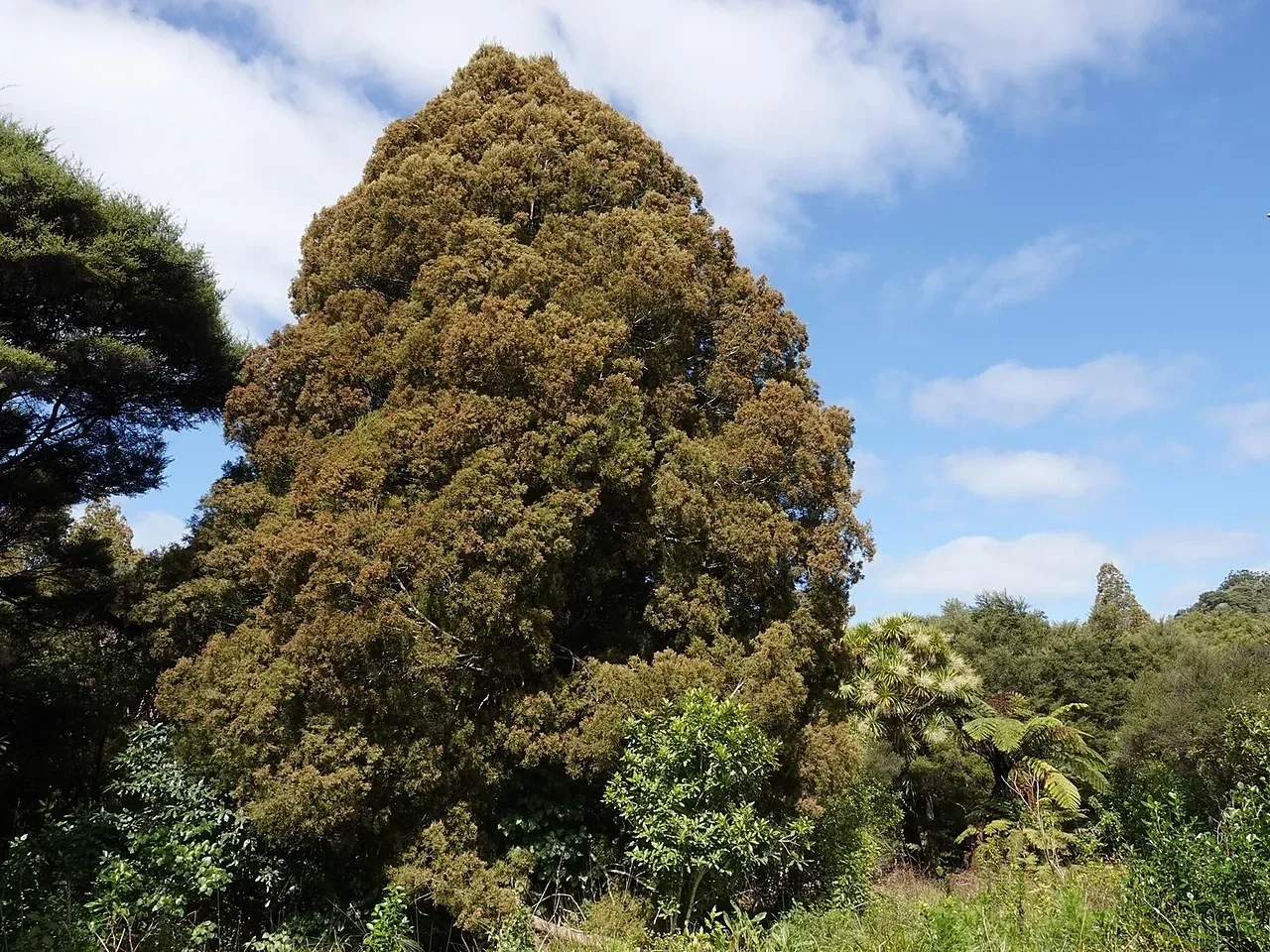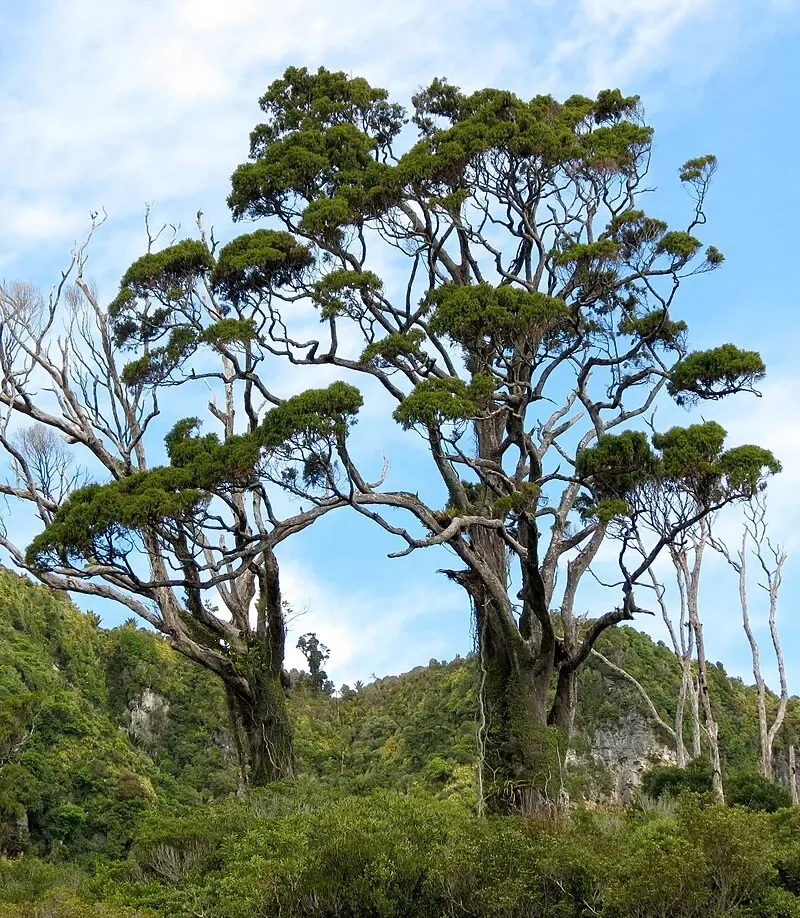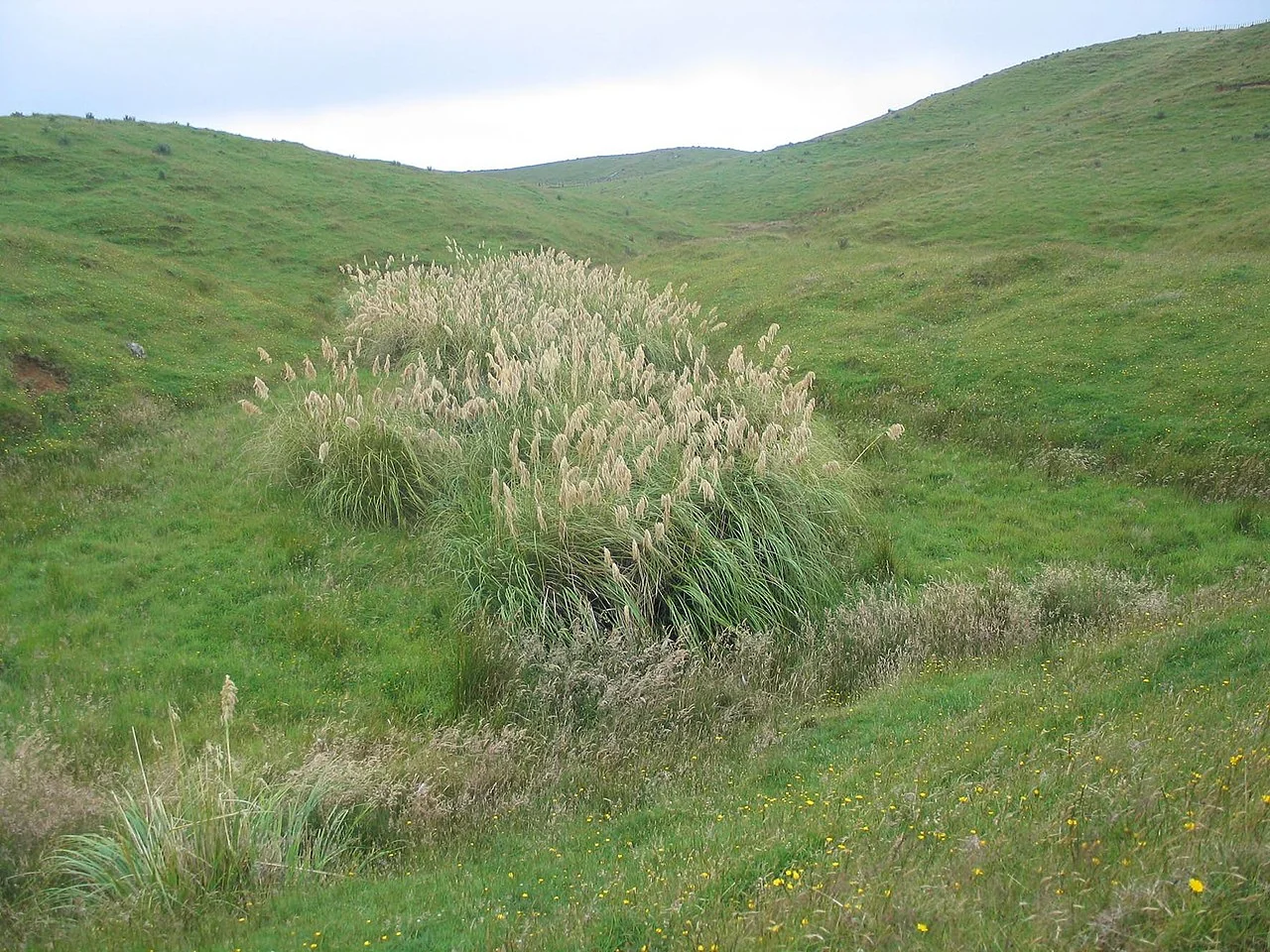
Toetoe
Cortaderia fulvida
Toetoe (Cortaderia fulvida, now reclassified as Austroderia fulvida), known as kakaho in Te Reo Māori, stands as one of New Zealand's most iconic and culturally significant native grasses, creating spectacular displays with its magnificent golden plumes that can tower up to 3 meters high. This majestic tussock grass represents the true New Zealand alternative to the invasive pampas grass, distinguished by its more graceful form, earlier flowering, and deeper cultural connections to the land. The plant forms robust clumps of long, arching leaves that can reach 2 meters in length, with distinctive sharp edges and a characteristic dull green appearance on the upper surface contrasting with a glossy sheen below, often adorned with fine white hairs that catch the light beautifully. From early summer, Toetoe produces its famous plumes - dense, feathery inflorescences ranging from tawny gold to rich bronze, measuring 60-75cm in length and persisting throughout winter to create year-round garden interest. These dramatic flower heads appear several weeks earlier than pampas grass, providing crucial timing advantages for garden displays and wildlife habitat. Historically central to Māori culture, every part of the plant served important purposes - the strong leaves were woven into baskets, mats, and fishing nets, while the fluffy seed heads provided tinder for fires and soft padding for bedding. Found naturally throughout New Zealand in wetlands, stream banks, and open grasslands from coastal areas to montane regions, Toetoe demonstrates remarkable adaptability to diverse growing conditions while requiring minimal maintenance once established. Its ability to tolerate both drought and periodic flooding, combined with resistance to strong winds and frost, makes it an invaluable choice for sustainable landscaping and restoration projects that celebrate New Zealand's unique botanical heritage.

Plant Description
Botanical Features
Cortaderia fulvida, also known as Kakaho or Toetoe (now reclassified as Austroderia fulvida), is a robust, tussock-forming, deciduous perennial grass native to New Zealand. It forms large, compact tufts of narrowly linear, rough-edged, mid-green leaves that are often described as arching, reaching up to 2 meters long. The leaves are dull on the upper side and shiny on the underside, often adorned with fine white hairs. From early summer, Toetoe produces its famous plumes - dense, feathery inflorescences ranging from tawny gold to rich bronze, measuring 60-75cm in length and persisting throughout winter. It typically grows to a mature size of 1.2-2.1 meters tall and 1.2-1.8 meters wide. This species is highly adaptable to various climatic and soil conditions, including wetlands, stream banks, and open grasslands from coastal areas to montane regions.
Quick Facts
| Scientific Name | Cortaderia fulvida (now Austroderia fulvida) |
|---|---|
| Height | 2-3 m |
| Spread | 1-2 m |
| Water Needs | High |
| Light | Full sun |
| Frost Tolerance | Good |
| Salt Tolerance | Poor |
| Growth Rate | Fast |
| Lifespan | Long |
Climate Best Suited to
Toetoe (Cortaderia fulvida) thrives in areas with consistent moisture, from coastal to inland wetland areas throughout New Zealand. It adapts well to typical New Zealand growing conditions with appropriate care and positioning.
Regional Suitability
| City | Climate Suitability |
|---|---|
| Whangārei | Ideal |
| Auckland | Ideal |
| Hamilton | Ideal |
| Tauranga | Ideal |
| Rotorua | Ideal |
| Gisborne | Ideal |
| New Plymouth | Ideal |
| Napier | Ideal |
| Whanganui | Ideal |
| Palmerston North | Ideal |
| Wellington | Ideal |
| Nelson | Ideal |
| Christchurch | Ideal |
| Dunedin | Ideal |
| Invercargill | Ideal |
Natural Habitat
Toetoe (Cortaderia fulvida, now reclassified as Austroderia fulvida) is a magnificent native grass that is a prominent feature of New Zealand's diverse landscapes. Its natural habitat spans a wide range of environments, from coastal areas to montane regions, and from sea level up to approximately 600 meters in altitude. This robust tussock grass thrives particularly well in wet and damp conditions, commonly found alongside streams, on lake margins, in wetlands, and within damp spots in forest clearings. However, its adaptability extends to coastal environments, where it can be found on dunes and hillsides, including sea cliffs, demonstrating its tolerance to salt and wind. It is also a pioneer species, often colonizing disturbed areas such as forestry roads and logging tracks, especially in the Central North Island. This versatility and hardiness make Toetoe a vital component of many New Zealand ecosystems, contributing to soil stabilization and providing habitat in both pristine and regenerating areas.
Plant Conservation
Cortaderia fulvida, also known as Austroderia fulvida or Toetoe, is a native New Zealand grass. Its national conservation status in New Zealand is "Not Threatened" as of 2023. It is considered abundant and often naturalizes in suitable habitats.
However, there are regional variations in its conservation status. For example, in Auckland, it was classified as "Threatened - Regionally Endangered" in 2025, with qualifiers indicating specific threats.
This species is often used in habitat restoration, particularly for protecting stream sides and roadside banks. However, its excessive use in some areas, without regard for its native range, poses a risk to other allied Austroderia species due to potential hybridism and competition.
Growing Requirements
Soil Requirements
Toetoe (Cortaderia fulvida) performs best in well-draining soil that retains adequate moisture. Like most New Zealand natives, it prefers soils that don't become waterlogged but maintain consistent moisture levels. Good drainage is essential for healthy root development.
- Well-draining soil essential for healthy growth
- Prefers consistent moisture without waterlogging
- Adapts to various soil types with good drainage
- Benefits from organic matter incorporation
- Mulching helps retain moisture and suppress weeds
Light Requirements
Toetoe (Cortaderia fulvida) performs well in full sun to partial shade conditions. Like many New Zealand natives, it adapts to various light conditions but typically shows best growth and form in positions that receive adequate sunlight throughout the day.
- Full sun to partial shade positions
- At least 4-6 hours of direct sunlight daily
- Tolerates light shade in warmer climates
- Morning sun particularly beneficial
Water Requirements
Toetoe (Cortaderia fulvida) requires regular watering during establishment, typically for the first 1-2 years. Once established, it becomes more drought-tolerant but benefits from consistent moisture during dry periods. Avoid overwatering which can lead to root problems.
- Regular watering during establishment phase
- Moderate drought tolerance once established
- Consistent moisture during dry periods beneficial
- Avoid waterlogged conditions
- Mulching helps conserve soil moisture
Planting Guide
When to Plant
Plant out into permanent positions in late spring or early summer, after the last expected frosts.
Site Selection and Soil
- Sunlight: Thrives in full sun. It can also tolerate partial shade.
- Soil: Prefers most well-drained, fertile soils. It can also tolerate wet and heavy soils, as well as harsh soil conditions.
- Hardiness: Generally hardy and resilient to wind, salt spray, and moderate drought once established. Some sources suggest winter protection in its first season. It is frost-hardy in USDA zones 7a - 9b.
Planting Steps
- Prepare the soil well before planting by adding compost.
- Dig a hole twice as wide and to the same depth as the root ball.
- Gently tease the roots and cut away any circled or tangled roots before positioning the plant in the hole.
- Backfill with soil, gently firming it down.
- Water deeply immediately after planting to settle the soil and keep it moist for several weeks until the new plant establishes.
Spacing
- For mass plantings, a planting center of 0.7 m is suggested.
Ecological Role
Cortaderia fulvida, also known as Austroderia fulvida or Toetoe, plays several ecological roles, particularly in its native New Zealand environment. It is a robust, tussock-forming grass that is often utilized in habitat restoration efforts, especially for stabilizing stream sides and roadside banks due to its hardiness and ability to tolerate a wide range of climatic and soil conditions, including poor soil, drought, wind, and frost.
- Habitat and Distribution: This species is found in diverse habitats, ranging from coastal areas to montane regions, commonly growing alongside streams, lake margins, in damp forest clearings, seepages, dunes, and on hillsides.
- Seed Dispersal: Its wind-dispersed seeds contribute to its natural spread.
- Restoration and Shelter: While beneficial for restoration and providing shelter, particularly in farm shelter belts, its excessive use in some areas has raised concerns about potential hybridism with other native Austroderia species and competition with them.
- Cultural Uses: Historically, the leaves of Cortaderia fulvida were also used by Māori for various cultural purposes, such as crafting baskets, kites, mats, and roof thatch.
Uses and Significance
Garden Uses
- Excellent for native plant gardens and restoration
- Suitable for naturalistic landscape designs
- Low maintenance once established
- Contributes to local biodiversity
- Attractive to beneficial native wildlife
Landscaping with Toetoe
Toetoe (Cortaderia fulvida) is a versatile and visually striking plant that brings a unique architectural element to any garden. Its tall, elegant plumes and robust, arching foliage make it a popular choice for a variety of landscaping applications, from creating natural screens to adding texture and movement to mixed borders. Its adaptability and low-maintenance nature further enhance its appeal for both residential and commercial projects.
Key Landscaping Uses
- Architectural Feature: With its impressive height and dramatic plumes, Toetoe serves as an excellent focal point in the garden, providing year-round interest.
- Natural Screening: Planted in a row, Toetoe can form a dense, informal screen, offering privacy and shelter from the wind. It is a great native alternative to bamboo or other screening plants.
- Revegetation and Erosion Control: Its extensive root system makes it ideal for stabilising banks and slopes, and it is frequently used in riparian planting and wetland restoration projects.
- Wildlife Habitat: The dense foliage provides shelter for native birds and insects, while the flower heads can be a food source for some species.
- Low-Maintenance Gardens: Once established, Toetoe is drought-tolerant and requires minimal care, making it a perfect choice for low-maintenance or water-wise garden designs.
When incorporating Toetoe into your landscape, it is important to give it enough space to grow to its full potential. It is also crucial to distinguish it from the invasive Pampas Grass (Cortaderia selloana), which has denser, more upright plumes and is a declared pest in many regions. By choosing the native Toetoe, you are not only adding a beautiful plant to your garden but also supporting New Zealand's unique biodiversity.
Seasonal Care Calendar
Spring
Spring is an active growth period for Toetoe (Cortaderia fulvida). New growth emerges and this is an ideal time for planting new specimens. Monitor soil moisture as temperatures warm and growth accelerates.
- Active growth period with new foliage development
- Ideal time for planting new specimens
- Monitor soil moisture as temperatures rise
- Apply organic mulch if needed
Summer
Summer is typically the main growing season for Toetoe (Cortaderia fulvida). Ensure adequate watering during hot, dry periods, especially for young plants. Established plants show good heat tolerance with appropriate care.
- Peak growing season with active development
- Monitor watering needs during hot weather
- Young plants need consistent moisture
- Established plants show good heat tolerance
Autumn
During autumn, Toetoe (Cortaderia fulvida) begins to slow its growth as temperatures cool. This is another good time for planting as conditions become more favorable. Reduce watering frequency but maintain soil moisture.
- Growth slows as temperatures moderate
- Good time for planting new specimens
- Reduce watering frequency gradually
- Maintain soil moisture without overwatering
Winter
Winter is typically a dormant period for Toetoe (Cortaderia fulvida), with minimal growth activity. Reduce watering but ensure plants don't completely dry out. Most New Zealand natives are cold-hardy and require minimal winter protection.
- Dormant period with minimal growth activity
- Reduce watering but avoid complete drying
- Generally cold-hardy in most New Zealand climates
- Minimal winter protection required
When to Prune and How Much
Toetoe (Cortaderia fulvida) generally requires minimal pruning to maintain its natural form and health. Most maintenance involves removing dead or damaged growth and light shaping if needed.
- Remove dead, damaged, or diseased growth as needed
- Light pruning to maintain shape if desired
- Prune after flowering if applicable
- Avoid heavy pruning which can stress the plant
- Use clean, sharp tools to prevent disease
- Most natives maintain good form without regular pruning
Always use clean, sharp tools when pruning to minimize disease risk. Native plants typically maintain their natural form well and often require less intervention than exotic species.
How to Grow Toetoe
Toetoe is a magnificent and iconic native grass that is surprisingly easy to grow, making it an excellent choice for adding dramatic texture and height to gardens, or for use in revegetation and wetland restoration projects. Its adaptability to a wide range of conditions, from coastal areas to montane regions, coupled with its stunning golden plumes, ensures it is a popular and reliable plant. While generally low-maintenance, understanding its propagation methods can help in expanding its presence and ensuring its continued success.
From Seed
Propagating Toetoe from fresh seed is a highly reliable and straightforward method. Collect the fluffy seed heads in late summer or autumn when they are fully mature. Gently rub the seed heads to release the small, light seeds. Sow the seeds onto the surface of a well-draining seed-raising mix, as they require light for germination. Do not cover the seeds too deeply; a very thin layer of fine grit or vermiculite is sufficient. Maintain consistent moisture in the seed tray and provide warm, bright conditions. Germination typically occurs within 2-4 weeks. Once seedlings have developed a few true leaves and are large enough to handle, they can be carefully transplanted into individual pots and grown on in a sheltered location before planting out into the garden.
From Division
Established Toetoe clumps can be easily divided, especially in late winter or early spring before new growth begins. This method is excellent for rejuvenating older, overgrown plants and for creating new plants that are genetically identical to the parent. Carefully dig up the entire clump, or a section of it, using a sharp spade. Divide the clump into smaller sections, ensuring each section has a healthy portion of roots and several shoots. Replant the divisions immediately into well-prepared soil, ensuring they are planted at the same depth as the original plant. Water thoroughly after planting and keep consistently moist until established.
Pests and Diseases
Toetoe (Cortaderia fulvida) is a remarkably resilient plant and is generally considered free from significant pests and diseases, making it a low-maintenance choice for gardeners. However, like any plant, it can occasionally face issues, particularly when stressed or in specific environmental conditions.
Common Issues
- Armillaria Root Rot: While not a common garden problem, Cortaderia fulvida can be susceptible to Armillaria root rot (Armillaria novae-zelandiae), especially in areas where dead stumps or infected plant material are present. This fungus can cause a decline in plant health and eventual death. To minimise the risk, ensure good soil drainage and remove any dead or decaying wood from the vicinity of the plant.
- Generalist Pathogens: In some cases, Toetoe may be affected by generalist grass pathogens, such as fungi that cause minor leaf spots or blight. These are rarely serious and can often be managed by ensuring good air circulation around the plant and avoiding overhead watering.
- Invertebrate Damage: While Toetoe does not have any specialised pests, generalist feeders may occasionally cause minor damage to the foliage. The larvae of the native flax notcher moth (Tmetolophota steropastis) have been known to feed on the leaves, but this is typically not a significant issue and is part of the natural ecosystem.
Overall, the best defence against pests and diseases is to provide Toetoe with its preferred growing conditions: full sun, well-drained soil, and adequate moisture, especially during establishment. A healthy, vigorous plant is far less likely to succumb to any problems.
Cultural Significance
Cortaderia fulvida, commonly known as Toetoe, holds cultural significance for the Māori people of New Zealand. The Māori traditionally utilized the leaves of the toetoe plant for various purposes, including making baskets, kites, mats, wall linings, and roof thatching. Additionally, the leaves were used to create containers for cooking food in hot springs.
Bonus Tip
Toetoe is often confused with the invasive Pampas grass, but you can tell them apart by their flowering time and plumes. Toetoe flowers earlier and has drooping flower spikes, while Pampas grass has upright, fluffy plumes.

